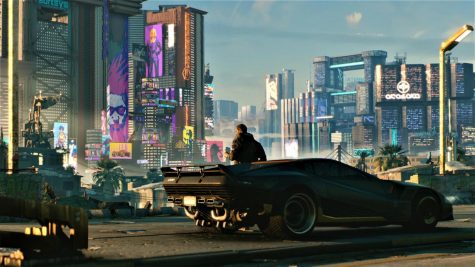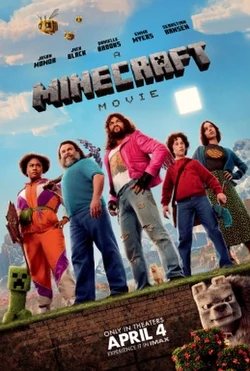Cyberpunk 2077 (PC) Review Part 1: A Good Dystopian World
Cyberpunk 2077 is one of the most ambitious and hyped RPG games that CD Projekt Red has developed after the award-winning release of The Witcher 3: The Wild Hunt. CDPR crafted Cyberpunk 2077 very distinctly from the Witcher series as they shifted Cyberpunk 2077 into a more personalized experience for the player, than say Geralt of Rivia who we follow in his exhilarating journey.
It is astoundingly impressive that they switched gears from a fantasy hack and slash to a futuristic First Person Shooter in a dystopian world of Cyberpunk that is still not shy of respectfully showing mature themes and content to the player.
Story
Main Character:
When the game begins, we first customize our main character V through three possible origin stories limited to the freedom-loving ‘Nomad’, the street smart ‘Streetkid’, or the high rising ‘Corpos.’ Each origin story has its own exclusive quest and dialogue options that are somewhat inconsequential as most are strictly for minor background information, questions to extend conversations, or better relate to specific characters.
During customization, there’s a wide and vast variety to alter V appearance from the preset choices ranging from hairstyle, fingernails, body tattoo, piercings, makeups, eye color (wacky ones too), teeth, and your genitals. Unfortunately, this is the only time you’ll be customizing V from the game and can only see yourself in mirrors or in the third-person perspective of a vehicle. There is no location like a barber to alter V’s appearance.
Plot:
After the 20-40 minute prologue, the story follows V as a mercenary who is trying to make a living in Night City with his/her friend Jackie. As they were pushing up to the major league of mercenaries, they were given a gig to really prove themselves and as Murphy law has always stated, it went wrong.
Due to the biochip within V’s head, you have the ghost of a legendary anti-corporate rockerboy, Johnny Silverhand, who died ages ago and is now trapped in your head which is slowly killing you.
The story length is shorter than expected and can be completed in around 15-18 hours, if we’re not including the side quests. It is a tight and well-told story that isn’t too overly complicated, but it is best to take your time with the main and side quests to add more spice to the overall experience.
There are past table top Cyberpunk games created as far back as 1988, but it is not a requirement to play these tabletop Cyberpunk games to fully grasp the story. Cyberpunk 2077 is more of a far distant sequel, 50 years ahead, but it is nice for context.
Characters:
The majority of characters are written with depth and likeability that I genuinely felt a connection with a few of them due to their unique charm and performance. The voice actors really entice conversations to be tense, comedic, sorrowful, or joyful at times. Characters are also very expressive in actions as well with their subtle hand and leg movements, facial expressions, and the environment around them.
World
Exploration:
Although the map of Night City may look deceptively smaller than the City of Los Santos from GTA V, it certainly makes up in verticality and density in six different districts of Night City. Each district is like exploring different sections of a theme park with its own culture of personality, vendor, and architecture. This goes hand in hand with the density and verticality as those emphasize Night City’s feeling of oppression, poverty, or even capitalism in this dystopian world of Cyberpunk.
There are very few activities to do in Night City as boxing, street racing, and shooting contest are tied to questlines and not available to redo again once it’s done which is a shame as it’s very short.
The Badlands, on the other hand, is a sparse arid desert filled with trouble and several points of interest occupied by Nomads. You won’t be occupied in the Badlands often other than for the quests and minor point of interest which made it felt barren and a bit forgettable.
 Quest:
Quest:
The better chunk of Cyberpunk 2077 is the side quests, almost each and every one of them has a handcrafted and compelling hook, narrative, and theme to it that it feels like it is part of the main story. You can approach and end some quests in as many as 2-4 different ways that have a rippling outcome in the future or even other quests as well. This makes decision making very critical even if you didn’t know it at first.
Vehicle:
Regardless if it’s a wrecked Nomad car in the Badlands or the high premium supercars, being in a vehicle in first person is detailed to the brim especially with small details of the speedometer, the cup holders, and even the fabrics of the seats. The exterior of the car also is coherent with the performance of the car and it’s very distinct with each of them including the tiny two-seater car that drives like there’s no safety in mind as if the car had personalities.
Overall, driving can still feel messed up at times especially with the cars physics atrociously rubber feeling when turning or crashing haphazardly. The map icon is also badly positioned as its zoomed appearance leads you to miss turns too often.
Unfortunately, you cannot customize your cars to your liking at all and are limited to a vast amount of preset cars given by your Fixer around Night City that will hound you with texts and calls about an expensive vehicle that you cannot afford.
Music:
The in-game soundtrack is one of the only things that function properly enough to get you in a positive mood. It amplifies the tensions of combat very well especially ones with prolonged boss fights. The radios also compliment the driving experience when you’re taking in the scenery that, at times, I just wanted to hear it all the way through as I awe the sight of the towering buildings of Night City.
**Stay tuned for part two of our review of Cyberpunk 2077. In part two we will look at the gameplay, controls, difficulty, and overall performance. Part two can be found here.











